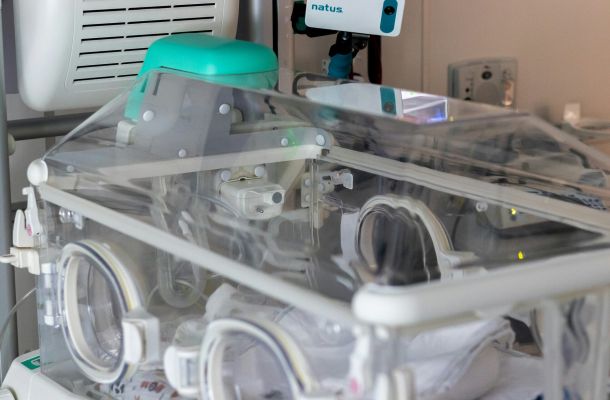
News
Birth is Just the Beginning: Matrescence and Maternal Health Quality
Several years ago, I sat in a conference room at St. Joseph’s Hospital in Denver to discuss a new program designed to focus on the process of becoming a mother and the emotional aspects of one of the most significant transitions a person will experience in their lifetime.
At the time, I wasn’t familiar with the term matrescence. I had never even heard it before. However, the staff initiated the meeting with a reflection centered around this quote: “No one mentioned it. In 9 whole months, not one person said you’re about to meet someone entirely new, and it’s not your baby. It’s going to be you.” I felt chills during the meeting as we discussed that quote and how painfully true it is in the birthing experience.
In January of this year, NPR ran a story about this very phenomenon and noted that becoming a mother is a huge, complicated life transition that can shake every fiber of a person’s being. The process even has its own name: matrescence. While this term might seem relatively new, it was actually coined in the ’70s by medical anthropologist Dana Raphael. According to the Cambridge Dictionary, matrescence is the process of becoming a mother: those physical, psychological, and emotional changes you go through after the birth of your child.
Currently, there is a limited focus on matrescence in the perinatal care approach. We tend to speak more about “having a baby” rather than “becoming a mother,” with a stronger emphasis on physical changes than the psychological and emotional transformations that birthing people experience. Acknowledging matrescence and integrating it into high-quality perinatal care and policies is crucial to addressing severe maternal morbidity, perinatal mood and anxiety disorders, and family support and well-being.
There are positive trends in Colorado toward focusing on matrescence. In our January blog, we celebrated the paid family leave program in Colorado (FAMLI), which allows new parents the time and resources to focus on their transition and well-being. Additionally, there is our state’s decision to expand Medicaid coverage to 12 months postpartum and the FY25 Governor’s budget, which supports the expansion of Family Connects, a universal, brief nurse home visiting program that offers every birthing person some knowing support in those early weeks.

Matrescence is also a current and growing focus of CPCQC’s work. To further support matrescence, CPCQC’s initiatives include:
- Building a more robust and sustainable care navigation workforce and peer support workforce trained in PMADS to provide additional connection and support postpartum.
- Improving outpatient workflows to support screening for PMADS postpartum and providing additional training for outpatient providers on PMADS.
- Increasing access to perinatal mental health support across the state through a partnership with PFWC.
However, significant changes are still required. The current system effectively ends perinatal care for the birthing person at 6 weeks postpartum, despite the fact that it may take the body 6 months to a year, or even longer, to feel close to normal depending on individual health and any complications during delivery. Moreover, the majority of maternal deaths occur 42-365 days postpartum when clinical and social support is no longer emphasized. There is room for improvement.
Here are a few considerations for Colorado:
- Focus on defining perinatal care pathways through the first year postpartum, outlining what is needed, who can provide it, how it will be funded, and how birthing persons will easily navigate it.
- Integrate robust perinatal mental health prevention and treatment from conception through at least one year postpartum through payment, policy change, and provider education and engagement.
- Emphasize the transition to motherhood by investing more in perinatal peer support programs across the state and further expanding the Family Connects and Healthy Steps programs to ensure that the birthing person remains as much the focus of care and support as the infant.
- Develop and promote modern, tailored communication strategies to reach expectant mothers and families in their communities about “becoming” and encourage birthing persons to maintain their connection to care throughout the first year postpartum.
This blog includes typically gendered terms like mom or maternal. CPCQC is committed to inclusivity and respect for the patient. Valuing, respecting, and affirming an individual’s identities contributes to improved health outcomes, and the language used to communicate with individuals about themselves and their communities plays a critical role in affirming their identities. Throughout the work of CPCQC we recognize and respect and support all patients who may not identify with those terms.
Keep Reading



